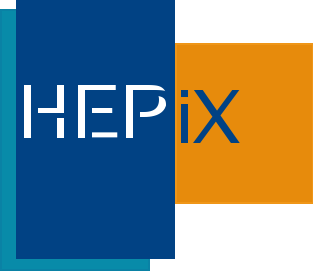Alberto Rodriguez Peon
(Universidad de Oviedo (ES))
14/10/2015, 15:00
Storage & Filesystems
CvmFS is a network file system based on HTTP and optimised to deliver experiment software in a fast, scalable, and reliable way. This presentation will review the status of the stratum 0 deployment at CERN, mentioning some of the challenges faced during its migration to ZFS as the underlying file system.
Alberto Pace
(CERN)
14/10/2015, 15:50
Storage & Filesystems
Several discussions are ongoing at CERN concerning the future of AFS and a possible replacement using the existing CERNBOX service based on OwnCloud and the CERN disk storage solution developed for the LHC Computing (EOS).
The talk will mainly review the future plans for teh CERNBOX Services ant the various use case that have been identified.
Alexandr Zaytsev
(Brookhaven National Laboratory (US))
14/10/2015, 16:10
Storage & Filesystems
We give a report on the status of Ceph based storage systems deployed in RACF that are currently providing 1 PB of data storage capacity for the object store (with Amazon S3 compliant RADOS Gateway front end), block storage (RBD), and shared file system (CephFS with dCache front end) layers of Ceph storage system. The hardware deployment and software upgrade procedures performed in the year of...
George Vasilakakos
(STFC)
14/10/2015, 16:30
Storage & Filesystems
RAL is currently developing storage services powered by a Ceph object storage system. We review the test results and experiences of the newly-installed 5 PB cluster at RAL, as well as our plans for it. Since the aim is to provide large scale storage for experimental data with minimal space overhead, we focus on testing a variety of erasure coding techniques and schemes. We look at...
Gerard Bernabeu Altayo
(Fermilab)
14/10/2015, 16:50
Storage & Filesystems
Fermilab stores more than 110PB of data employing different technologies (dCache, EOS, BlueArc) to address a wide variety of use cases and application domains. This presentation captures present state of data storage at Fermilab and maps out future directions in storage technology choices at the lab.
Mr
David Fellinger
(DataDirect Networks, Inc)
14/10/2015, 17:10
Storage & Filesystems
The acceleration of high performance computing applications in large clusters has primarily been achieved with a focus on the cluster itself. Lower latency interconnects, more efficient message passing structures, higher performance processors, and general purpose graphics processing units have been incorporated in recent cluster designs. There has also been a great deal of study regarding...
Mr
Amit Chattopadhyay
(WD)
15/10/2015, 09:00
Storage & Filesystems
Given the amount of inline data generated, large volume hard-drive manufacturing is an appropriate environment to employ contemporary 'Big Data' techniques. It can be used to generate a feedback loop, as well as a feed-forward path. The feedback loop helps fix what is broken. The feed-forward path can be used to predict drive health.
In this presentation, I will focus on some work we have...
Patrick Fuhrmann
(Deutsches Elektronen-Synchrotron Hamburg and Zeuthen (DE))
15/10/2015, 09:20
Storage & Filesystems
The pressure to provide cheap, reliable and unlimited cloud storage space in the commercial area has provided science with affordable storage hardware and open source storage solutions with low maintenance costs and tuneable performance and durability properties, resulting in different cost models per storage unit. Those models, already introduced by WLCG a decade ago (disk vs tape) are now...
Zhenping Liu
(Brookhaven National Laboratory (US))
15/10/2015, 09:40
Storage & Filesystems
As ATLAS tier-1 computing facility center in US, RHIC and ATLAS Computing Facility (RACF) at Brookhaven National Lab has been operating a very large scale disk storage system dCache with tape back-end to serve a geographically diverse, worldwide ATLAS scientific community. This talk will present the current state of USATLAS dCache storage system at BNL. It will describe structure,...
Natalia Ratnikova
(Fermilab)
15/10/2015, 10:00
Storage & Filesystems
Prior to LHC Run 2 CMS collected over 100 PB of physics data on the distributed storage facilities outside CERN, and the storage capacity will considerably increase in the next years. During the Run 2 the amount of storage allocated to individual users analysis data will reach up to 40% of the total space pledged by the CMS sites. CMS Space Monitoring system is developed to give a...
